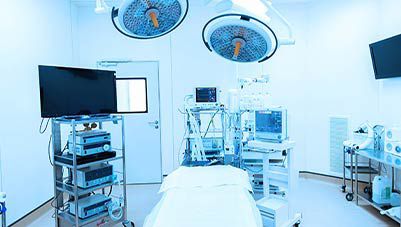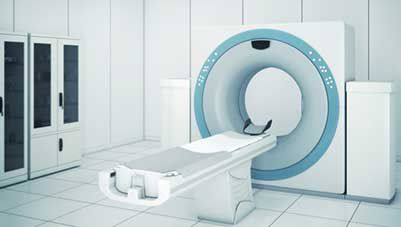Mechanical ventilators are life-saving medical devices widely used in healthcare settings to support or replace spontaneous breathing in critically ill patients. They are essential in intensive care units (ICUs) and emergency settings, particularly for patients with respiratory failure, severe lung infections, or during surgical procedures requiring anesthesia. With advancements in technology, modern ventilators have become more efficient, user-friendly, and adaptable to diverse medical needs.
What is a mechanical ventilator?
A mechanical ventilator is a sophisticated device designed to assist or replace the natural breathing process. It delivers controlled airflow, oxygen, or a combination of both to the patient’s lungs through tubes or a mask. Ventilators are used temporarily during acute conditions or long-term for chronic respiratory disorders. This device is a cornerstone of critical care medicine, enabling precise control over oxygen delivery and respiratory parameters.
Importance of mechanical ventilators in ICU
Mechanical ventilators are indispensable in ICUs for the following reasons:
- Life support: They provide critical respiratory support to patients who cannot breathe independently.
- Oxygenation: Ventilators ensure adequate oxygen delivery to tissues, preventing organ failure.
- Respiratory management: They help stabilise patients with severe respiratory distress, chronic obstructive pulmonary disease (COPD), or post-operative complications.
- Customisable settings: Ventilators allow healthcare providers to tailor oxygen levels, airflow rates, and pressure settings based on patient needs.
Types of ICU mechanical ventilation
ICU ventilators are categorised based on their functionality and mode of operation. Common types include:
- Invasive ventilation:
- Delivered through endotracheal or tracheostomy tubes.
- Used for critical conditions requiring long-term support.
- Non-invasive ventilation (NIV):
- Delivered through masks or nasal devices.
- Suitable for less severe respiratory conditions.
- Volume-controlled ventilation:
- Provides a fixed volume of air per breath.
- Ensures consistent oxygen delivery.
- Pressure-controlled ventilation:
- Delivers air until a set pressure is reached.
- Reduces the risk of lung injury in sensitive patients.
Functions and components of a mechanical ventilator
Mechanical ventilators perform several critical functions to maintain respiratory support:
- Airflow delivery: Supplies a continuous or intermittent flow of air and oxygen.
- Pressure regulation: Adjusts airway pressures to prevent lung damage.
- Monitoring: Tracks respiratory rate, oxygen levels, and lung compliance.
- Alarm systems: Alerts caregivers to abnormalities like disconnections or high pressure.
Key components of a ventilator include:
- Breathing circuit: Tubes connecting the ventilator to the patient.
- Control panel: Interface for adjusting settings.
- Oxygen blender: Mixes air and oxygen.
- Humidifier: Ensures the air delivered is warm and moist to prevent dryness.
How does a mechanical ventilator work?
Mechanical ventilators function by mimicking the natural breathing process through:
- Trigger mechanism: Initiates a breath when the patient’s respiratory effort is detected or at preset intervals.
- Airflow delivery: Provides a predetermined amount of air or oxygen.
- Exhalation process: Allows passive release of carbon dioxide.
- Feedback loop: Monitors and adjusts settings to ensure optimal performance.
Ventilators can operate in different modes, such as assist-control, synchronised intermittent mandatory ventilation (SIMV), or pressure support ventilation (PSV), depending on patient requirements.
Price of mechanical ventilator in India
The cost of mechanical ventilators in India varies based on features, brand, and type. Below is an indicative price range:
| Type of Ventilator | Price Range (INR) |
|---|---|
| Basic Non-Invasive Ventilator | 1,50,000 – 3,50,000 |
| Advanced ICU Ventilator | 5,00,000 – 15,00,000 |
| Portable Ventilator | 2,00,000 – 7,00,000 |
| High-End Ventilator | 15,00,000 – 30,00,000 |
Prices may vary based on the supplier and additional features like software compatibility or monitoring systems.
Factors to consider before buying a mechanical ventilator
Before purchasing a ventilator, consider the following factors:
- Patient Needs: Assess whether the ventilator is for acute, chronic, or emergency use.
- Features: Ensure it offers customisable settings, advanced modes, and alarm systems.
- Portability: Evaluate if mobility is a requirement.
- Maintenance: Check the availability of spare parts and service support.
- Budget: Compare costs to find the best value without compromising quality.
Financing options for buying mechanical ventilators
Given the high cost of ventilators, financing solutions can make them more accessible. Options include:
- Medical equipment finance: Dedicated financing solutions, like medical equipment finance an help manage costs efficiently.
- Leasing: Suitable for short-term or temporary requirements.
- Government subsidies: Explore schemes that provide financial assistance.
Conclusion
Mechanical ventilators are vital tools in critical care, ensuring patients receive adequate respiratory support during life-threatening conditions. Understanding their types, functions, and working mechanisms is crucial for informed decision-making. Additionally, considering cost-effective financing options makes acquiring these essential devices more feasible. Explore the latest innovations in medical equipment and financing solutions to equip healthcare facilities with reliable and advanced ventilators.











